Employment Medical Advisory Service – ever decreasing circles
Lord Robens may have been a curious choice to review Britain’s health and safety system given his close connection to the Aberfan disaster in 1966 when Robens was head of the National Coal Board. His response to the disaster is well documented, what is not so well known in his time as head of the NCB is he was an advocate of the need to improve occupational health in the mining industry.
It is, therefore, less of a surprise the Robens Review contained a chapter devoted to occupational medicine including reference to Employment Medical Advisory Service set up in 1972. The review suggested the new service should sit within the proposed health and safety authority (the HSE) on its establishment and EMAS came into the HSE on its inception in 1975.
Robens said at the time he could not envisage EMAS developing in isolation from the mainstream NHS, and he went on to add his commission would like to see more emphasis on occupational medicine in the training of doctors. The UK are now training less occupational health doctors and nurses than we ever have and, from the HSE website if you want information on EMAS you must apply in writing (no e-mail address supplied). A search of the HSE Annual Report and Accounts will take you no further forward if you want information on EMAS, there appears to be none.
In 1990 there were sixty-five doctors and twenty-one nurses working in EMAS with more occupational medicine specialists working in Employment Rehabilitation Centres, now so little is known about EMAS and their work
What have the Tories done to EMAS and whatever happened to all the Employment Rehabilitation Centres!!
As far back as the Robens Commission there was debate about the definition of a comprehensive occupational health service, in their evidence to the review the British Medical Association urged that employers should be urged by law to provide occupational service to a specified standard, or to pay for a service provided by the state. The review had also grappled with the role of such services, some of the respondents advocated closer connection between NHS health interventions and workplaces and less focus on specified disease and more on emerging concerns such as mental health and vocational rehabilitation.
The excellent manifesto document from Doctors in Unite published in 2021 sets out their proposals for a statutory occupational service delivered by the state, there is some commonality with some of the respondents to the Robens Review over 50 years ago
Last year the UK Government carried out a consultation, Occupational Health – Working Better, aimed at increasing access to occupational health services including a minimum framework for occupational health provision, what lessons could be learned from other countries and alternative ways of delivering occupational health services using a multi-disciplinary workforce.
In relation to the first point Scottish Hazards responded that any framework should be statutory, nee less to say the Government opted for voluntarism. Scottish Hazards pointed the UK Government to other countries with far higher access to occupational health provision, in every case higher accessibility was linked to occupational health being placed on a statutory footing in these countries.
On the last point, more could be done to improve delivery of occupational health by focusing on non-medical interventions and looking at equipping trade union representatives to support colleagues through proven case management practices. Ideally, and in the spirit of Robens, employers and trade unions would work together promote health at work, occupational health including job retention and rehabilitation. This would lead to far more positive resolution to ill health cases at work than unions having to support members fighting draconian sickness absence management procedures.
In the lead up to the election, now Prime Minister Keir Starmer committed to a review of health and safety legislation, we cannot help but feel this is going to disappoint because up until now they are missing the point, it is our health and safety system needs reviewed.
A modern day Robens is required to establish if our enforcement body is fit for purpose, what needs to be done to revitalise health and safety (unashamedly stealing the name of a previous HSE strategy), how do we bring EMAS back and with a bigger role in improving the UKs occupational health and how do we ensure autonomy is returned to the HSE and never placed under threat again.
Ian Tasker is CEO of Scottish Hazards and a member of the Scottish Occupational Health Action Group.

Leave a Reply
You must be logged in to post a comment.